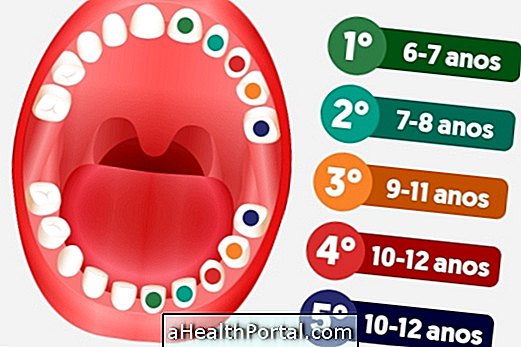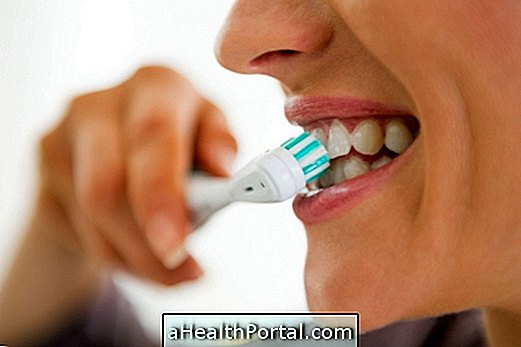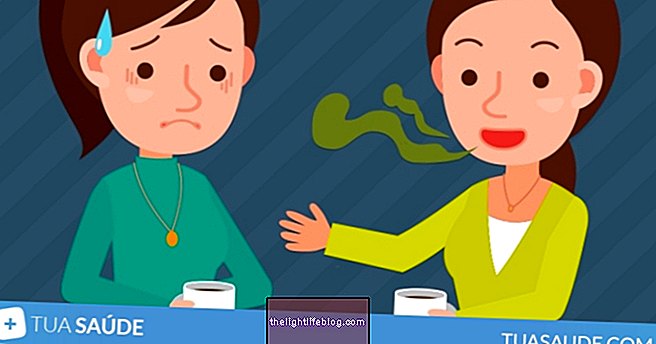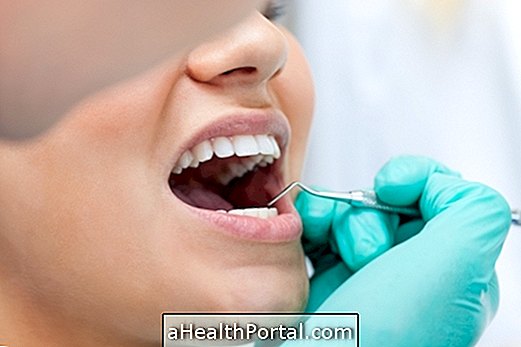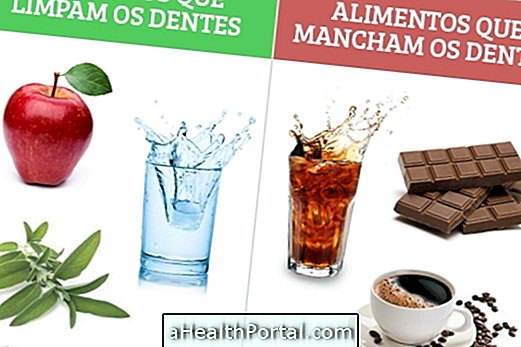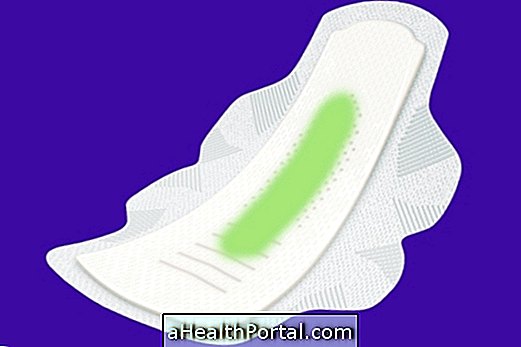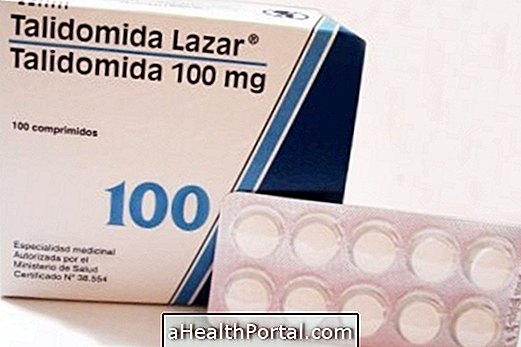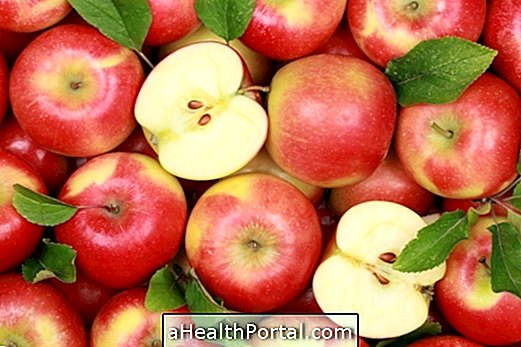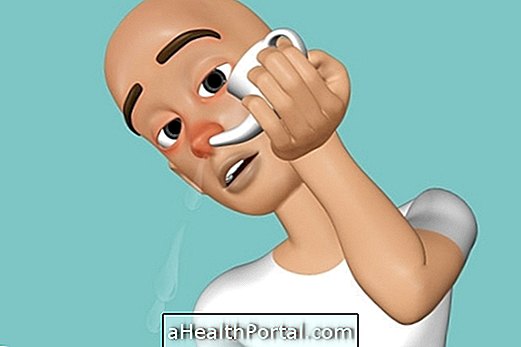The appearance of child caries can vary from child to child, because it depends on your eating habits and oral hygiene. Thus, children who eat a diet rich in sugar and who do not brush their teeth at least twice a day are more likely to develop caries.
Caries corresponds to the proliferation of bacteria naturally present in the mouth, which accumulate and form plaques. In plaques, bacteria continue to proliferate and begin to perforate the tooth, damage resulting in small holes in the teeth. The presence of bacterial plaques does not necessarily indicate the presence of caries, however it is important to go to the dentist to have it removed and to check if there has been caries formation, since plaques represent a risk factor. Learn more about plaque.

How to prevent child caries
Each child has his or her own sensitivity to developing cavities, so while some children never seem to have this problem, others have it more regularly. However, there are some simple precautions that can reduce the appearance of cavities:
- Brush your teeth 2 times a day, and 30 minutes after consuming very sweet foods;
- Floss between your teeth whenever you brush, as it is possible to remove the rest of food that has not been removed through brushing, thus avoiding the formation of plaques and reducing the risk of cavities;
- Decrease sugar consumption, since sugar favors the development of bacteria;
- Use fluoride pastes properly, helping to maintain mouth health;
- Go to regular dentist appointments at least 2 times a year.
This care must be maintained even in children who have never had cavities, as they guarantee correct dental health, avoiding problems with teeth and gums in adolescence and adulthood.
When to start brushing your teeth
Teeth should be brushed from the first moment they emerge, even if they are milk, as your health guarantees a better development of permanent teeth.
Initially, when the child is still unable to spit, you should brush your teeth only with water, but when you already know how to spit, it is recommended to start using children's toothpaste with 500 ppm of fluoride, at least until the age of 6 years . After that age, the paste can already be the same as the adult with 1000 to 1500 ppm of fluoride. Learn how to choose the best toothpaste.
A good tip to encourage your child to brush their teeth is to show the formation of plaque on their teeth, if this is happening, and explain that it is formed by bacteria that "eat" and destroy their teeth.
How to eat sweets without cavities
It is very important to avoid frequent consumption of sweet foods, as the high amount of sugar in the composition of most of these foods facilitates the development of plaque, increasing the risk of cavities.
However, as it is very difficult to prevent children from eating sugar, there are some tips that guarantee a more "safe" consumption of sweet foods for teeth:
- Do not make a habit of eating sweets every day;
- Avoid consuming sugar before bed, at least until 30 minutes before brushing your teeth;
- Chew sugar-free gum after eating candy, to help build saliva to clean your teeth;
- Prefer sweets with less sugar, for example avoiding cakes covered with caramel, which can stick to your teeth;
- Brush your teeth at least 2 times a day and preferably 30 minutes after eating the candy.
In addition, regular visits to the dentist also help to eliminate all plaque, preventing the appearance of cavities.
Was this information helpful?
Yes No
Your opinion is important! Write here how we can improve our text:
Any questions? Click here to be answered.
Email in which you want to receive a reply:
Check the confirmation email we sent you.
Your name:
Reason for visit:
--- Choose your reason --- DiseaseLive betterHelp another personGain knowledge
Are you a health professional?
NoMedicalPharmaceuticalsNurseNutritionistBiomedicalPhysiotherapistBeauticianOther
